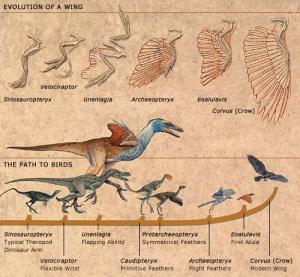Location: 29 Harrison St, Newton, MA
Date: 4/23/2017
Time: 2:00 PM
Weather: Sunny with some cloud cover. 54℉.
While walking my aunt and uncle's dog back from the dog park, I came across a wild turkey. The picture is blurry because I didn't want to get closer and risk being attacked and also because the dog was pulling at the leash, so it was hard to keep my hand steady. My aunt and uncle told me that, while one of their neighbors does keep pet turkeys, it is someone in a different house. This one is probably wild.
Turkeys were rampant in Massachusetts during colonial times, which is why turkey is a part of Thanksgiving traditions. For Native Americans in the area, turkeys were a source of food, apparel, and artifacts. When the settlers came, they exerted undue pressures on the turkey population by hunting them year round and razzing the forests in order to set up farms and villages. Due to these selective pressures, the turkeys began to disappear.
The ones we see now are most likely the result of human pressures. "Between 1911 and 1967 at least 9 attempts in 5 counties were undertaken to restore turkeys to Massachusetts. Eight failed (probably because of the use of pen-raised stock; and one established a very marginal population which persisted only with supplemental feeding." Even with the reintroduction, the turkey population is still shaped by humans.
They are still hunted, though the season is limited. Turkey predators fall into two camps. Some, like snakes, crows, raccoons and skunks are only after the eggs. A fully grown turkey is strong, surprisingly fast, and mean, with a very sharp beak. The predators that attack a fully grown turkey are humans, coyotes, and multiple avian predators like the red tailed hawk and great horned owl. Turkeys lay tons of eggs. This is an adaptive behavior that allows the turkeys to offset losses due to predators and other reasons.

Date: 4/23/2017
Time: 2:00 PM
Weather: Sunny with some cloud cover. 54℉.
While walking my aunt and uncle's dog back from the dog park, I came across a wild turkey. The picture is blurry because I didn't want to get closer and risk being attacked and also because the dog was pulling at the leash, so it was hard to keep my hand steady. My aunt and uncle told me that, while one of their neighbors does keep pet turkeys, it is someone in a different house. This one is probably wild.
The ones we see now are most likely the result of human pressures. "Between 1911 and 1967 at least 9 attempts in 5 counties were undertaken to restore turkeys to Massachusetts. Eight failed (probably because of the use of pen-raised stock; and one established a very marginal population which persisted only with supplemental feeding." Even with the reintroduction, the turkey population is still shaped by humans.
They are still hunted, though the season is limited. Turkey predators fall into two camps. Some, like snakes, crows, raccoons and skunks are only after the eggs. A fully grown turkey is strong, surprisingly fast, and mean, with a very sharp beak. The predators that attack a fully grown turkey are humans, coyotes, and multiple avian predators like the red tailed hawk and great horned owl. Turkeys lay tons of eggs. This is an adaptive behavior that allows the turkeys to offset losses due to predators and other reasons.

Turkeys date back 11 million years. Before that, there were dinosaurs that were very similar to birds. These are thought to be the common species. There are 6 subspecies of turkey, which are found across both American continents. There is variation in wing and tail feathers, leg length, general size, presence of spurs (pointy bits on the back of the birds ankle), and the timbre of their gobble. Outside of these subspecies, turkeys have no close relatives. They are cousins to the pheasant.
Sources for further exploration:
http://www.mass.gov/eea/agencies/dfg/dfw/fish-wildlife-plants/wild-turkey-faq.html
http://www.nwtf.org/hunt/article/wild-turkey-subspecies
https://www.thespruce.com/wild-turkey-history-385522

Comments
Post a Comment